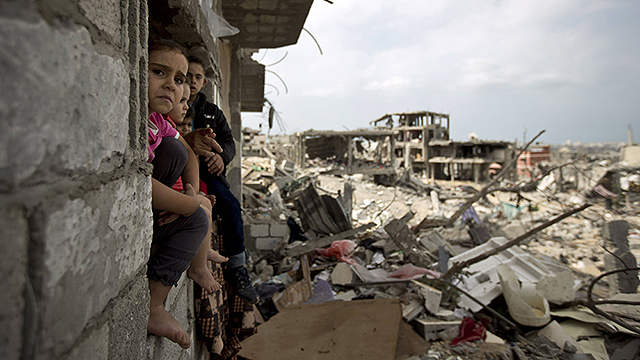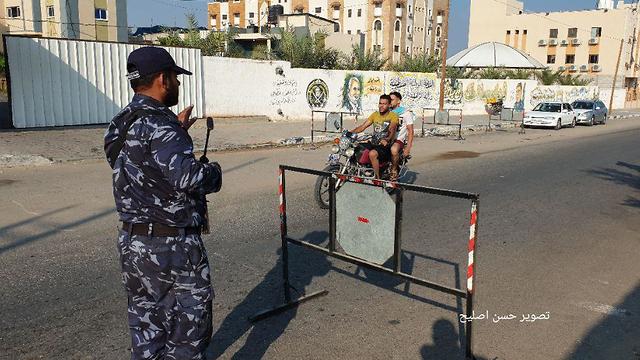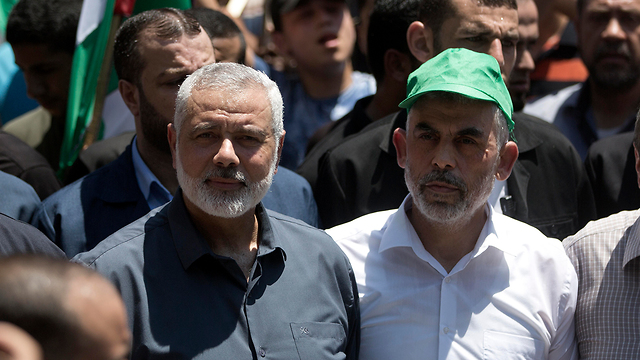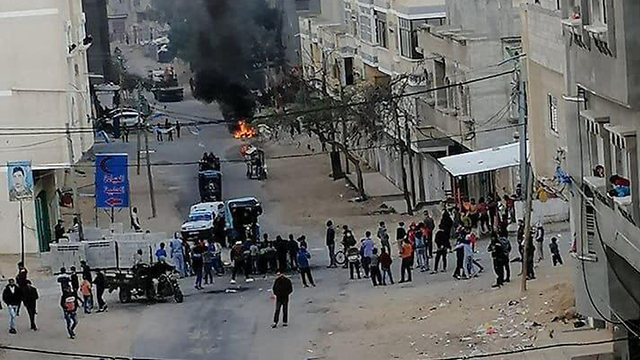
There is no magic solution for the Gaza Strip
Opinion: Five years have passed since the 2014 Israel-Gaza conflict, and it seems like another war is on the horizon; there are steps Israel can take in the short term, but its long-term strategy is far more important
It is five years since the 2014 Operation Protective Edge - the fiercest campaign Israel has ever carried out in the Gaza Strip - came to an end. At its end, Israel learned three important lessons that lay the foundations for its current policy regarding the coastal enclave.
1. Understanding that the economical reality and the security situation in the Strip are closely tied together (something that was not fully realized on the eve of the conflict), which resulted in widespread rebuilding of the Strip.
2. Lacking any means of establishing communication between Israel and Hamas led to miscalculations on both sides and resulted in the creation of numerous channels of communication through regional and international agents.
3. Realizing that in a complicated arena such as Gaza, where there's one ruling dominant power who has no will or way to control all the acting players, widespread escalation can happen quickly, this realization was translated to a careful and precise policy regarding the Gaza Strip, especially on the military front.
Those lessons gave Israel with three years of relative peace. Rehabilitation of Gaza proceeded steadily, and the trauma caused was embedded in the Gazan consciousness.
Yet in the last two years, we've seen constant escalations, which led both sides to assume another campaign was only a matter of time.
Like on the eve of war in 2014, today's civil unrest is still the main source of tensions, and the situation in Gaza is worse than it was in summer 2014.
Hamas understands that it has failed to ease people's distress, and so a disturbing parallel to the events that led to the 2014 campaign can be drawn.
In its need to consolidate a strategic response to this complicated reality, it would best if Israel were to drop collective assumptions such as the idea we can find a solution to the Gaza problem.
Looking closely at the demographic and economic foundations of the area only shows the reality - we can facilitate the situation, but not resolve it.
The second assumption is that there can be a replacement to Hamas as the ruling body in the Strip. In practice, there's no willingness or ability on the part of Egypt, the United Nations or any other local leadership to step into Hamas's shoes.
The third assumption is that the crisis in Gaza is solely the Palestinians' problem, a view that repeatedly proves itself to be false, as the situation reflects on Israel on all levels.
There is also the realization that although Hamas is a bitter enemy, it may be the lesser of two evils compared to a possible power vacuum that could give rise to anarchy or more extreme powers in the ascendant in the Strip.
Twelve years have passed since Hamas entrenched itself in Gaza and Israel still hasn't formulated a long-term strategy regarding the Strip.
So, before any escalation that could end in Israel's total reoccupation of the Strip, it would be wise to consider a different strategy on two time plains.
The first is in the short term, and at its core is a sense of stability for Gaza's citizens, which would constitute a base for Israel to relax security restrictions. This should include work visas for inside Israel and the advancement of civilian projects in the Strip.
But there also needs to be a long-term plan that has at its core the downfall of Hamas. We should, however, strive to avoid two opposite scenarios - one in which a king is named in Gaza and the other is Israel's total and lengthy direct control of the Strip.
Israel must wait for internal change in Gaza, especially by the younger generation, whose distance from Islamic rule only deepens with time and occasionally bursts into civil protests.
It's not too farfetched to believe that Hamas's relentless and regressive grip on the two million residents of Gaza will lead to civil unrest, and Israel needs to be prepared for such a scenario. Israel should also consider ways it can help internal changes come to fruition without taking direct action inside of the Strip.
At the bottom line, Israel needs to understand that it must choose between bad or worse scenarios as a solution to the Gaza issue.
Its decision makers have to wake up from the dream of easy and quick solutions in either the military or political spheres regarding the situation on the Strip and adopt a more patient state of mind.
Above all, the Israeli leadership should present the complexity of the situation in Gaza to their people, and explain that there is no magic solution.
Michael Milshtein is the head of the Palestinian Studies Forum at the Moshe Dayan Center for Middle Eastern and African Studies at Tel Aviv University. He is a colonel (res.) in the IDF and served as a senior officer in IDF intelligence.














